Drawing is a universal language, and within this art form, “Cute:mnkymce3zh8= Drawing” has carved out a niche that resonates with artists and audiences alike. Whether you’re doodling in a sketchbook or creating digital art, the charm of cute drawings lies in their ability to evoke warmth, joy, and often a sense of nostalgia.
In this article, we’ll explore the art of Cute:mnkymce3zh8= Drawing, covering essential techniques, tips, and sources of inspiration to help you create your own adorable artwork.
What Makes a Drawing ‘Cute’?
Cute:mnkymce3zh8= Drawing, often referred to as “kawaii” in Japanese culture, are characterized by their simplicity, exaggeration of features, and the evocation of innocence and childlike qualities. The elements that typically make a drawing cute include:
- Large Eyes: Oversized, expressive eyes are a hallmark of cute characters. They often convey emotions like happiness, sadness, or surprise in a way that instantly connects with the viewer.
- Round Shapes: Rounded shapes, whether in the character’s body, head, or facial features, contribute to a softer, more approachable look.
- Small Proportions: Cute:mnkymce3zh8= Drawing often feature small, chubby bodies or tiny limbs, which emphasize the character’s delicate or youthful appearance.
- Soft Colors: Pastel colors and muted tones are commonly used in cute drawings, adding to their gentle and pleasing aesthetic.
- Expressive Faces: Simple yet expressive facial expressions are key. A small smile, a tearful eye, or a blushing cheek can say a lot without overwhelming the viewer with detail.
Read Also: Boston Celtics vs Cleveland Cavaliers Stats | 192.168.100.2 IP Address
Techniques for Creating Cute:mnkymce3zh8= Drawing
Creating Cute:mnkymce3zh8= Drawing involves mastering a few key techniques that bring out the charm and appeal in your artwork. Here’s a breakdown of some essential techniques to help you create adorable and captivating drawings:
A. Basic Shapes and Forms
Starting with basic shapes is the foundation of Cute:mnkymce3zh8= Drawing. This technique simplifies complex subjects into easily manageable parts.
- Use of Simple Shapes: Begin by breaking down your subject into simple shapes like circles, ovals, and rectangles. For example, a cute animal’s head might start as a circle, while the body could be an oval.
- Roundness and Softness: Emphasize round and soft shapes to enhance the cuteness. Rounded features, like chubby cheeks or plump bodies, are more endearing and create a sense of softness.
- Proportions: In cute drawing, proportions are often exaggerated. For instance, characters might have larger heads relative to their bodies, or big eyes compared to other facial features. These proportions help to create a youthful and innocent look.
B. Line Work and Contours
The lines you use in your drawing play a crucial role in defining the overall style and feel of the artwork.
- Smooth, Curved Lines: Use smooth, curved lines to outline your drawings. Harsh or jagged lines can detract from the softness that’s central to cute art.
- Thick and Thin Lines: Varying line thickness can add depth and interest to your drawing. Thicker lines can outline the main shapes, while thinner lines can be used for details.
- Minimalistic Contours: Keep the contours simple and avoid overcomplicating the design. This minimalism allows the cute elements, such as facial features and body shapes, to stand out more.
C. Shading and Texturing
Shading and texturing add dimension to your drawings, making them more lively and appealing.
- Soft Shading: Use soft, subtle shading to create a gentle gradient on the surfaces of your drawing. Avoid heavy shadows, as they can make the drawing appear more serious and less cute.
- Highlighting Roundness: Apply shading strategically to emphasize the roundness of cheeks, tummies, or other soft features. This technique can enhance the 3D effect and make your characters look more huggable.
- Texture for Detail: Add texture sparingly to enhance certain areas, like fur on an animal or hair on a character. Use small, delicate strokes to maintain the overall softness and cuteness.
D. Adding Personality Through Expressions
The expressions of your characters are what bring them to life, giving them personality and making them relatable.
- Exaggerated Facial Features: Focus on making the eyes large and expressive, as they are central to conveying emotion in Cute:mnkymce3zh8= Drawing. A slight tilt of the eyebrows or the size of the pupils can dramatically change the character’s mood.
- Simple Mouths: Often, the mouth is drawn as a small, simple shape, like a dot or a gentle curve. This subtlety adds to the character’s innocent and endearing expression.
- Body Language: Even in a minimalistic style, the positioning of the body can convey a lot of personality. A slight tilt of the head, a small wave, or a shy pose can make your character more dynamic and cute.
These techniques, when combined, can help you create drawings that are not only visually appealing but also full of character and charm. Whether you’re drawing animals, objects, or human characters, mastering these techniques will allow you to bring out the best in your cute art creations.
Popular Styles in Cute:mnkymce3zh8= Drawing
Cute:mnkymce3zh8= Drawing, with its universal appeal, spans various styles, each with its own distinct characteristics. These styles draw from different cultural influences, artistic traditions, and modern trends. Understanding these styles can help you find your own niche or expand your creative repertoire. Let’s explore some of the most popular styles in Cute:mnkymce3zh8= Drawing:
1. Kawaii Style
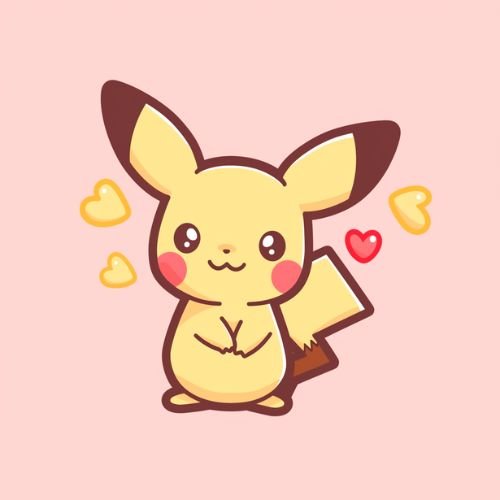
Origin: Japan
Characteristics:
- Exaggerated Features: Large, round eyes, small mouths, and chubby cheeks.
- Simplified Forms: Minimalistic lines with an emphasis on round, soft shapes.
- Bright Colors: Often uses pastel and bright colors to enhance the cute appeal.
- Emotional Expression: Characters often display simple, exaggerated emotions like happiness, sadness, or surprise.
Examples: Characters like Hello Kitty, Rilakkuma, and Totoro are iconic examples of the Kawaii style. This style is often associated with Japanese pop culture and has influenced fashion, merchandise, and even lifestyle choices worldwide.
2. Chibi Style

Origin: Japan
Characteristics:
- Miniaturized Proportions: Characters have large heads, tiny bodies, and short limbs, giving them a childlike appearance.
- Expressive Eyes: Large, round eyes dominate the face, often with exaggerated expressions.
- Cute and Comedic: Chibi characters are often used in a humorous or endearing context, appearing in comic strips, animations, and fan art.
Examples: Chibi versions of popular anime characters are common, where they are drawn in this style to accentuate their cuteness or to add a comedic effect in a narrative.
3. Cartoon Style
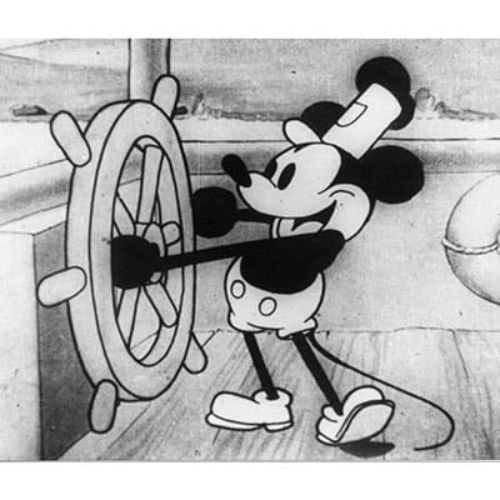
Origin: Western countries, particularly the U.S.
Characteristics:
- Stylized Characters: Simplified, exaggerated features with a focus on clear, bold lines.
- Varied Proportions: Unlike Chibi, cartoon characters may have exaggerated or varied body proportions, not necessarily miniaturized.
- Dynamic Expressions: Cartoon characters often display a wide range of emotions, sometimes exaggerated for comedic effect.
- Vivid Colors: Bright, vibrant colors are often used, sometimes with flat shading or minimal gradients.
Examples: Classic characters like Mickey Mouse, SpongeBob SquarePants, and the characters from The Powerpuff Girls showcase the Western cartoon style, blending cuteness with humor and personality.
4. Chubby Style
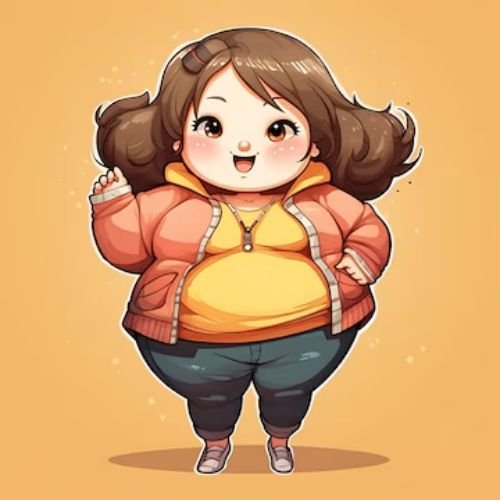
Origin: Various cultural influences
Characteristics:
- Round, Plump Figures: Characters have round, chubby bodies, often emphasizing softness and cuddliness.
- Small Facial Features: Faces are often small and centered, with tiny eyes and mouths, which adds to the overall chubby appeal.
- Minimal Detailing: The focus is on the overall form and shape rather than intricate details.
- Gentle Colors: Soft pastel colors or gentle shading enhance the cute and cozy feel.
Examples: The popular internet meme character “Pusheen the Cat” is a perfect example of the chubby style, featuring simple, rounded shapes and minimal facial details.
5. Doodle Style
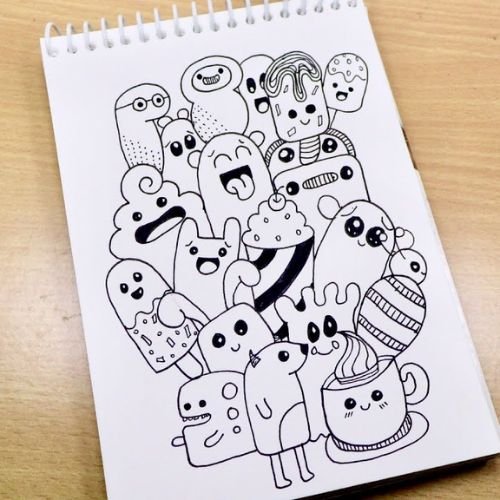
Origin: Informal, often used in sketchbooks and casual art
Characteristics:
- Simplistic and Spontaneous: Often drawn quickly, with an emphasis on spontaneity and creativity.
- Whimsical Designs: Doodles might feature exaggerated or surreal elements, playing with proportions and designs that are more abstract.
- Playful and Light-Hearted: The style is carefree, focusing on fun rather than perfection.
- Loose Lines: Lines may be loose or sketchy, adding to the charm and uniqueness of each drawing.
Examples: Many artists who enjoy creating cute art often start with doodles in this style, where the emphasis is on creative freedom. Characters like Molang exhibit a more refined version of doodle style, where simplicity meets cuteness.
6. Fantasy Cute
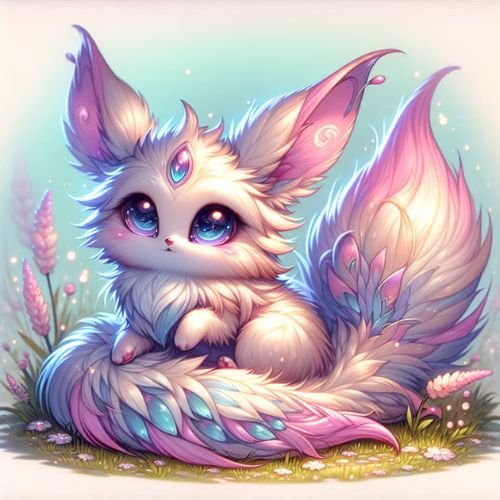
Origin: Influenced by fantasy genres and magical themes
Characteristics:
- Mythical Creatures: Features characters like unicorns, dragons, and fairies, all depicted with a cute, childlike twist.
- Magical Elements: Sparkles, stars, wings, and other fantasy elements are commonly incorporated.
- Vivid, Imaginative Colors: The color palette often includes iridescent, neon, or pastel tones to create a magical atmosphere.
- Detailed Accessories: Even within the cute aesthetic, there’s attention to detail, especially in clothing, wings, or magical items.
Examples: Characters like My Little Pony or Tinkerbell combine the elements of fantasy with cute aesthetics, appealing to a broad audience.
7. Minimalist Cute
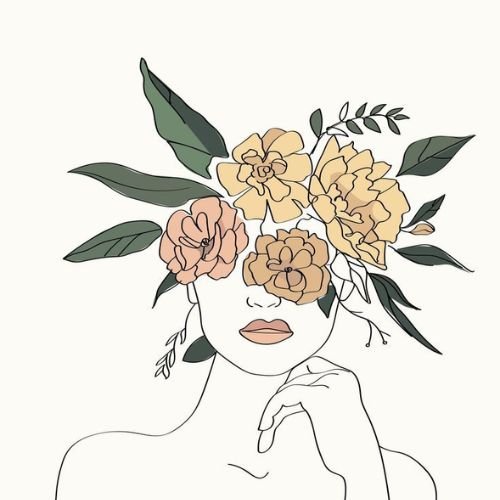
Origin: Modern design trends
Characteristics:
- Simplified Design: Focuses on reducing the character design to its most essential elements.
- Neutral Colors: Often uses soft, neutral colors with minimal shading or texturing.
- Simple Lines: Clean, thin lines define the characters, with little to no embellishment.
- Subtle Expressions: Emotions are conveyed through very slight changes in expression, emphasizing subtlety.
Examples: Brands like Moomin or Sanrio’s Little Twin Stars use a minimalist approach, balancing simplicity with cuteness in a way that is appealing across various media.
8. Anthropomorphic Style
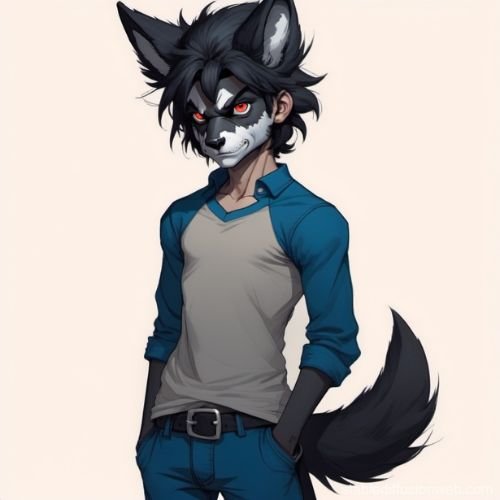
Origin: Global, with significant influence from both Eastern and Western cultures
Characteristics:
- Humanized Animals: Animals are given human traits, such as standing on two legs, wearing clothes, or displaying human emotions.
- Cute Proportions: Despite anthropomorphism, the characters maintain a cute aesthetic, often with large eyes, small noses, and round faces.
- Blend of Realism and Cartoons: While the characters may have realistic animal features, their overall design leans heavily towards the cartoonish and cute.
Examples: Characters like Winnie the Pooh and Tom and Jerry are classic examples of anthropomorphized animals presented in a cute, endearing way.
Tools for Cute:mnkymce3zh8= Drawing
While Cute:mnkymce3zh8= Drawing can be created with any medium, some tools are particularly well-suited for this style:
- Pencils and Paper: Start with basic sketches using graphite pencils on smooth paper. Mechanical pencils are great for fine details, while softer pencils can add shading and depth.
- Markers and Fineliners: For outlining and adding bold, clean lines, markers and fineliners are ideal. Micron pens or similar brands offer a variety of tip sizes for different effects.
- Colored Pencils: Colored pencils are perfect for adding soft, gradient colors. They allow for precise control, making them a favorite for coloring cute characters.
- Digital Tools: Digital drawing tablets, such as those by Wacom or iPad with Procreate, offer endless possibilities. Digital art allows you to experiment with layers, brushes, and colors without the fear of making irreversible mistakes.
Finding Inspiration for Cute:mnkymce3zh8= Drawing
Inspiration for Cute:mnkymce3zh8= Drawing is everywhere. Here are a few sources to spark your creativity:
- Nature: Animals, especially baby animals like kittens, puppies, and bunnies, are great references for cute drawing. Their natural proportions and expressions can guide your character designs.
- Toys and Dolls: Look at plush toys or collectible figures. Their design often highlights the key elements of cuteness—big eyes, small bodies, and round shapes.
- Anime and Manga: Many anime and manga series feature characters with exaggerated cute features. Shows like My Neighbor Totoro or Hello Kitty are perfect for studying this style.
- Children’s Books: Illustrations in children’s books often employ a cute art style. Classic books like Winnie the Pooh or The Little Prince offer timeless examples.
- Social Media: Platforms like Pinterest, Instagram, and DeviantArt are full of cute drawing inspiration. Following artists who specialize in kawaii or chibi art can keep your creative juices flowing.
Practicing and Developing Your Style
The key to mastering cute drawing is practice. Here are some exercises to help you improve:
- Daily Doodles: Commit to drawing something small and cute every day. It could be a simple face, an animal, or even an inanimate object with a face.
- Character Variations: Take a basic character design and draw it in different poses, expressions, and outfits. This helps you explore the versatility of your designs.
- Study and Mimic: Find drawings or artists you admire and try to replicate their work. This isn’t about copying but rather understanding how they achieve their style.
- Join a Community: Participate in online drawing challenges or join art communities. Sharing your work and getting feedback is invaluable for growth.
Final Thoughts
Cute:mnkymce3zh8= Drawing is more than just an art style; it’s a way to bring joy and positivity into the world. Whether you’re an aspiring artist or someone who draws for fun, embracing the elements of cuteness in your work can make your art more appealing and emotionally resonant.
Remember, the most important part of drawing is to enjoy the process. The more you practice and experiment, the more you’ll develop your unique style. So grab your sketchbook or tablet, and start creating your own world of cuteness today!
Read Also: 192.168.1.64 IP Addressing and Networking | The Game Archives Updates




